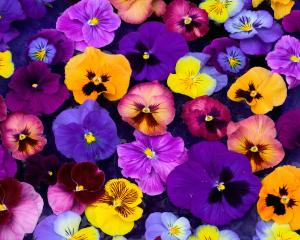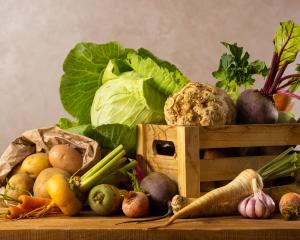Two Irish gardens remind Gillian Vine of home.
If anything embodies Irish gardens, it's my carrier bag emblazoned with the slogan: "We don't complain about the rain; it's what makes our gardens grow." The Gulf Stream wraps a warming blanket around Ireland's coastline and that, coupled with high rainfall and a temperate climate, has enabled Irish gardeners over the centuries to grow plants not usually seen at this latitude. As a result of what is usually a frost-free band extending inland for about 15km, Australian and New Zealand natives have flourished, especially in the southwest, at properties such as Derreen and Kells Bay, in County Kerry.
Derreen, facing the Kenmare Estuary, has been owned by the same family since the 17th century but the gardens are younger, a mere 150. The 5th Marquess of Lansdowne, who had served as Viceroy of India and Governor-General of Canada, inherited the property in 1866 and began laying out a 160ha woodland garden on the rocky site, a project that took him 60 years.
He started with windbreaks of cedar (Thuja) and hemlock (Tsuga), and the survivors are now giants. Other trees were added - conifers, redwoods, swamp cypress and Japanese cypress, magnolias, rhododendrons, the Chilean lantern tree (Crinodendron hookerianum) and Drimys winteri from South America, all of which grow well in southern New Zealand.
Unfamiliar to me was Stewartia pseudocamellia, a 15m deciduous tree with peeling bark, single white flowers in early summer and orange-red autumn foliage. Not keen on lime, it does well in Derreen's peaty soil.
New Zealand plants are well represented at Derreen, with an Olearia macrodonta on the drive, flaxes, cabbage trees, broadleaf, pittosporums and a vivid pink manuka in full bloom.
Australia's major contribution is tree ferns, with a grove of Dicksonia antarctica one of the garden's most impressive features.
Jackie Ward, who followed his father as Derreen's head gardener, points me on a path (one of 12km of them) that goes past a thicket of bamboo, Thamnocalamus spathiflorus var. crassinodus, which flowered last year, the first time since the 1950s. The time before that was in the 1890s, Jackie says.
"The first week in May is the best time to see the rhododendrons," he says.
Thankfully, they have been unscathed by two extraordinarily hard winters, although other plants - mainly weak-kneed Aussies - succumbed to the cold early last year, when the temperature dropped to an unheard-of -13degC.
It is the same story at Kells Bay Gardens, a short distance away across MacGillycuddy's Reeks, Ireland's highest mountain range, but a longish hike by road. Here, gardener Mark Collins reports the loss of some tree ferns and other plants but there have been some unexpected survivors, including a large kiwifruit vine in the walled garden.
"We had snow here [in 2011]. That is very rare," he comments.
Mark's brief is to restore and develop the Victorian gardens, which were very overgrown when the present owners bought the property in 2006. In the walled garden, he has cleared paths buried under soil for decades and trimmed overgrown trees and shrubs, as well as replanting an area in front of the house, a former hunting lodge.
In the new area is a massive Chilean wine palm (Jubaea chilensis), which weighed almost 12 tonnes when brought here in 2007 in a 40-foot container. The biggest palm in Ireland, it seems to be thriving and Mark obligingly stands under it in pouring rain so my photo gives an idea of its height.
Numerous ferns, including New Zealand species, grow well here and there is an interesting selection of Chilean plants, too.
Like Derreen, the soil is ideal for rhododendrons. Most are welcome but Rhododendron ponticum is a curse. This invasive species, originally planted at Kells Bay Gardens for shelter, has spread across a large part of the 17ha estate.
Mark has enlisted the aid of forestry students to clear part of it, not just to get rid of the century-old pest but to free up an area for future development.
As well as creating more space, the clearance has opened up lovely views of the Dingle Peninsula and a hill which, in September, turns completely pink as heather blooms.
Similar in many ways, these two gardens demonstrate how Victorian gardeners took advantage of acid soil, a temperate climate and all that rain to create gardens that draw visitors 150 years later.
• Gillian Vine was the guest of Failte Ireland and the Irish Tourist Board.
If you go
• In County Kerry, Gillian Vine stayed at the Butler Arms, Waterville, opposite the beach in Ballinskelligs Bay, Waterville, and one of Charlie Chaplin's favourite holiday destinations.
• Emirates now operates direct flights into Dublin from Dubai. The new service, which started on January 9, means travellers from New Zealand can make direct connections in Dubai to travel to the Irish capital. For details, see http://www.emirates.com/nz.
• For more about Ireland, see www.discoverireland.ie.













